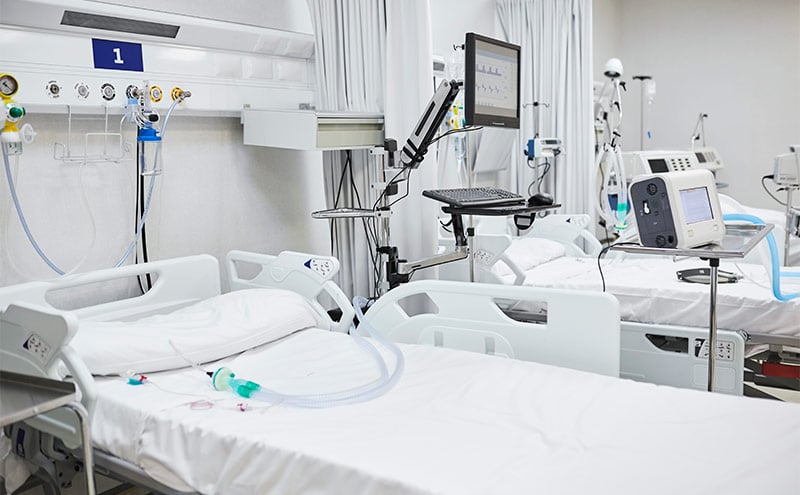
Creating an ED-ICU, Part 2: Identifying Key Stakeholders and Finding Resources
In part 1 of this series on creating emergency department (ED)-intensive care units (ICUs), I discussed how one might justify the need and conceptualize the purpose of a nascent ED-ICU. In this section, detailed attention will be given to aligning the interests of key stakeholders, particularly those who might initially be overlooked, and the importance of leveraging existing resources without upsetting those stakeholders.
The goal in this section is not just to figure out who is already "on your side," but to determine who could be and how you can get on their side by furthering, or at least not hindering, their goals as part of your project. The two stakeholders who most immediately come to mind are existing ED and ICU physicians. Concerns from an emergency medicine (EM) perspective include whether your project will facilitate or impede flow and add to or decompress existing workflow. Does the existing group find critical care patients interesting and want more time with them? Do they feel overwhelmed and want to move simpler patients through the system as quickly as possible? Will they, or a subset of them, form your staff for the ED-ICU? Will others view its creation as poaching the most interesting patients or minimizing the hassle of caring for complex ones? The structure proposed may be radically altered by differing needs and interests among this group.
Clearly, the existing intensivists also have a significant stake and may have similar concerns. By stabilizing, treating, and downgrading potential ICU admissions, are you decompressing an already busy service? Capturing and redirecting their revenue stream? How will they perceive the quality of care provided in your unit? Would any of them have interest in staffing such a unit? Participating in education for it? Consulting in it? Will your unit uphold the same quality metrics, which may have implications for the intensivist group and hospital as a whole? Consider also the importance of early discussions with the hospitalists and whether they have the capacity to care for patients who were only recently ICU-level and may now have 6-12 hours of stabilization instead of 24-36 were they initially admitted directly to the ICU. Broadly considering your stakeholders, physicians at referring hospitals should also be mentioned. Will they find your services valuable? Can you now offload their critically ill ED patients even prior to a definitive diagnosis that would clarify whether medical or surgical intensivists will ultimately be contacted? If 12 hours of stabilization are required, will these patients ultimately be returned for a floor admission at the sending facility? If so, pre-existing transfer agreements may be valuable and discussions with area insurers (who may find this model valuable for cost containment reasons) regarding funding these nonemergent return transfers crucial. Depending on their occupancy rates, referring hospitals may be either quite interested or quite disinterested in a stabilize-and-return model.
Other important stakeholders are those in the c-suite, especially the chief executive officer (CEO), chief medical officer (CMO), and chief financial officer (CFO). Knowing their priorities and how supportive they are of the ED and how risk-tolerant and innovative they may be will be critical to the success or failure of an ED-ICU. Do they perceive a gap in the care of existing patients? Is the hospital financially capable of taking a gamble and sacrificing short-term cash flow on your unit, if in the long run it will likely generate a positive return on investment? How do they generally perceive the EM and intensivist groups? What are the current initiatives and priorities for the hospital, and how does your unit further them? Are they most interested in providing cutting-edge care? Improving the consistency of existing care? The hospital's financial health? What unmet needs do their stakeholders have and how can you help meet them?
The importance of nursing staff to this process cannot be overstated. Neither EM nor ICU nursing staff may initially have all the skillsets required for your unit; reaching out to nursing leadership in both departments will be critical. Knowing how well the departments interact is important. Will you create a collaborative staffing model? Are joint educational initiatives possible? Will nurses work in multiple units/departments or only your new unit? Are there existing nurses with interest in doing this? Similarly, feedback from ancillary staff, including radiology techs and respiratory therapists, will be crucial to understanding their workflow and ensuring that your new unit does not place unreasonable or unmet resource demands on their departments.
Lastly, depending on the size and structure of your hospital, there are additional allies you may enlist in your mission. If your organization is an academic institution, can your unit further educational or research goals? For example, an internal medicine or surgery program director may have a significant stake if your unit will educate their trainees, even though the director doesn't work in the ED or ICU. Will your unit improve compliance with stroke, trauma, cardiac, or sepsis metrics? It likely will, and if so, you may find an advocate in those areas. Consider exploring patient safety committees as potential areas of support as well. Does your institution have a public relations or community outreach department that's been looking for an exciting project to showcase for the community? The more people providing support and perspective on how your initiative fits in with the entire organization, the better your chances for success. You want to stack the deck in your favor, and even if you find those with objections, considering and accommodating them early is well worth the time investment.
Enlisting all these allies, or at a minimum ensuring they have no insurmountable objections to your project, is needed because your project will require significant resources in terms of staffing, equipment, and physical space. In all categories, leveraging existing resources is likely preferable to obtaining new ones, and those listed above will often hold the keys. For example, is there unused space that could be repurposed to be an ED-ICU? Is the intensivist group slightly overstaffed and looking for additional consults? Does the ED have a dedicated respiratory therapist but marginal volume of existing patients requiring respiratory care? Most of these resources will be controlled by someone else.
There is no guarantee that others will support your project, which is why broadly considering who your allies might be and how your project can further their needs matters. Others will always fight harder for you if you're bringing something they want in the process. Ultimately, the goal should be to provide the best care possible for the entire set of patients in your ED, hospital, and community, which will require a collaborative approach ensuring others needs are met as well.
Josh Keegan, MD
Clinical Assistant Professor of Critical Care Medicine
University of Pittsburgh
Co-Director, UPMC Altoona NICU



